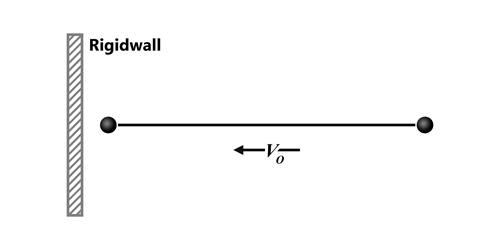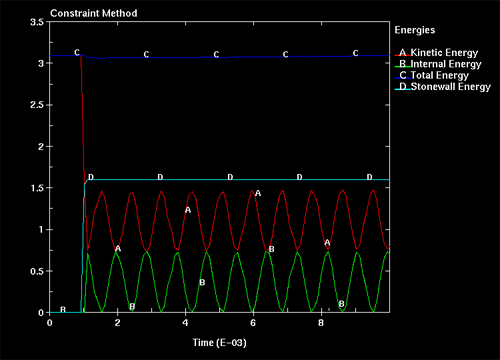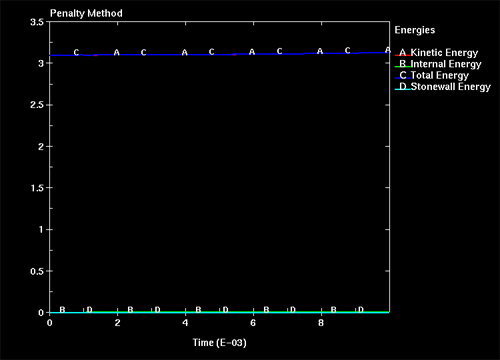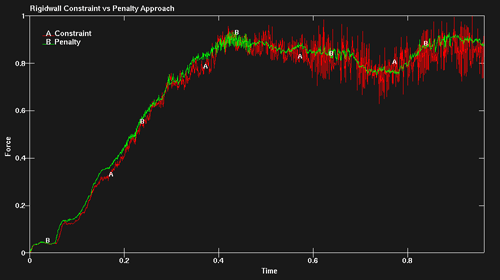There are two different methods that are available in LS-DYNA to treat nodes impacting a rigidwall (also referred as stonewall). The first method, which is the default method, is the constraint type that is used for all deformable nodes impacting a rigidwall. The second optional method is the penalty approach that is used for ALL rigid nodes or optional deformable nodes impacting the rigidwall. The primary difference between the two methods is in the conservation of energy and momentum.
Constraint Method
The default constraint method does not conserve momentum and the energy. This is due to the fact that when a deformable node is found to penetrate a rigidwall, its velocity is immediately reset to zero and is moved back onto the surface of the rigidwall. The kinetic energy, $latex frac{1}{2}mdot{x}^2$, that is lost in the process is recorded as the rigidwall/stonewall energy and the rigidwall force is computed based on the lost momentum and global timestep, $latex frac{mdot{x}}{dt}$, and applied to the nodes. The advantage with the constraint method is that it always guanrantees the node to lie on the positive side of the rigidwall (no penetration).
Penalty Method
The optional penalty method for rigidwalls, invoked by setting RWPNAL=-1.0 in *CONTROL_CONTACT , works identical to the contact-impact interface treatment. When a deformable or a rigid node is found to be penetrating a rigidwall, the penetrated distance along the rigidwall normal is computed and is resisted by applying a force that is proportional to the computed distance and multiplied with a stiffness factor that is based on the material of the impacting node and the dimensions of the element it is attached to. The penalty approach conserves both energy and momentum. It must be noted that penalty method is ALWAYS used for treating rigid nodes impacting a rigidwall when RWPNAL=1.0.
Noise in Rigidwall Forces
In one of the recent instances, forces generated by the default constraint rigidwall treatment is found be noisy. Starting from 971, RWPNAL in *CONTROL_CONTACT can be set to -1.0 to invoke the penalty treatment that may help in reducing the noise. The figure below shows the comparison between a constraint and a penalty approach for a roofcrush problem.


















